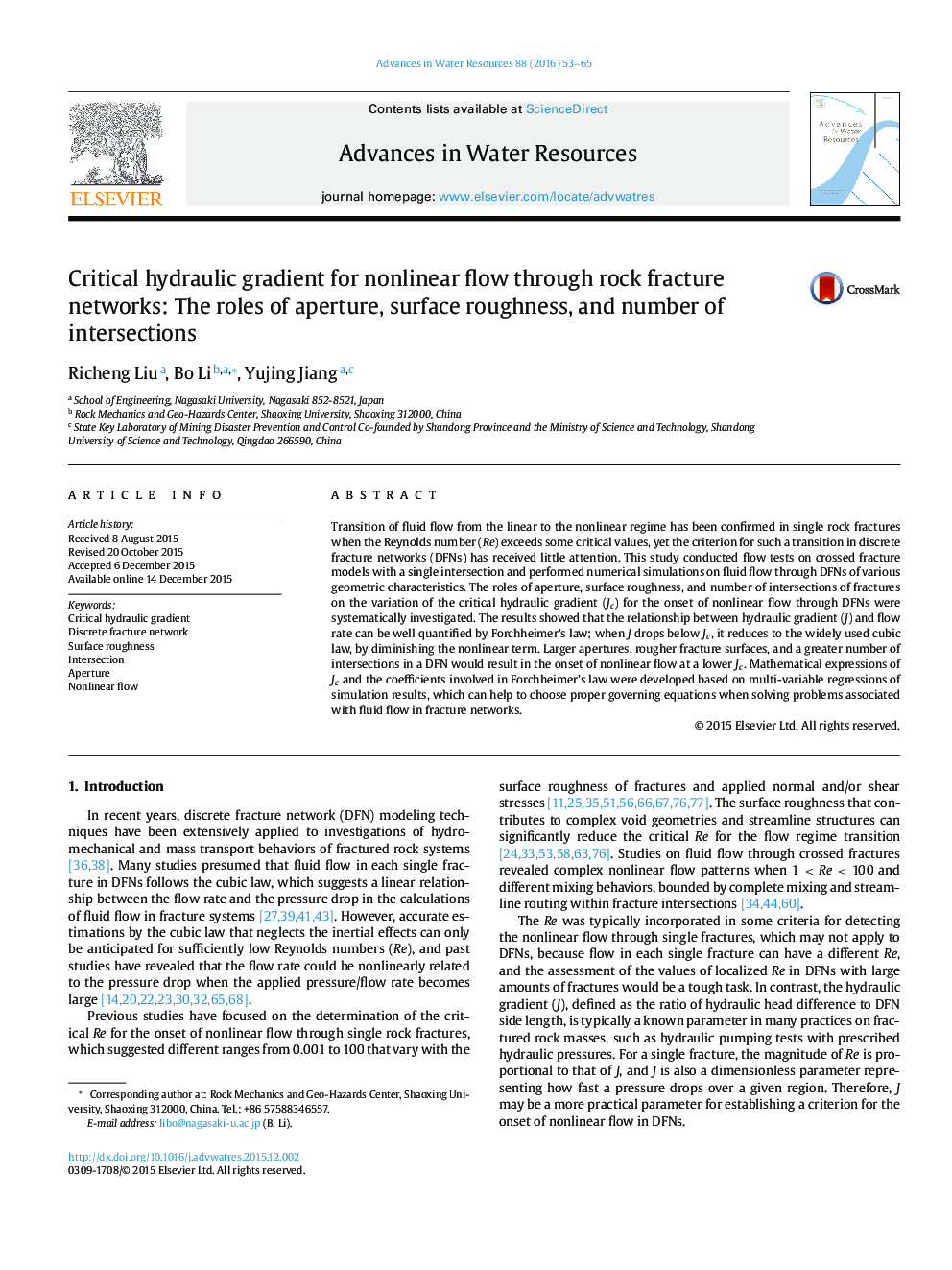| Article ID | Journal | Published Year | Pages | File Type |
|---|---|---|---|---|
| 4525321 | Advances in Water Resources | 2016 | 13 Pages |
•Flow test and numerical simulation solving NS equations on DFNs are conducted.•Critical hydraulic gradient depends on aperture, roughness and number of intersections.•Expressions for predicting coefficients in Forchheimer's law and critical gradient are proposed.
Transition of fluid flow from the linear to the nonlinear regime has been confirmed in single rock fractures when the Reynolds number (Re) exceeds some critical values, yet the criterion for such a transition in discrete fracture networks (DFNs) has received little attention. This study conducted flow tests on crossed fracture models with a single intersection and performed numerical simulations on fluid flow through DFNs of various geometric characteristics. The roles of aperture, surface roughness, and number of intersections of fractures on the variation of the critical hydraulic gradient (Jc) for the onset of nonlinear flow through DFNs were systematically investigated. The results showed that the relationship between hydraulic gradient (J) and flow rate can be well quantified by Forchheimer's law; when J drops below Jc, it reduces to the widely used cubic law, by diminishing the nonlinear term. Larger apertures, rougher fracture surfaces, and a greater number of intersections in a DFN would result in the onset of nonlinear flow at a lower Jc. Mathematical expressions of Jc and the coefficients involved in Forchheimer's law were developed based on multi-variable regressions of simulation results, which can help to choose proper governing equations when solving problems associated with fluid flow in fracture networks.
